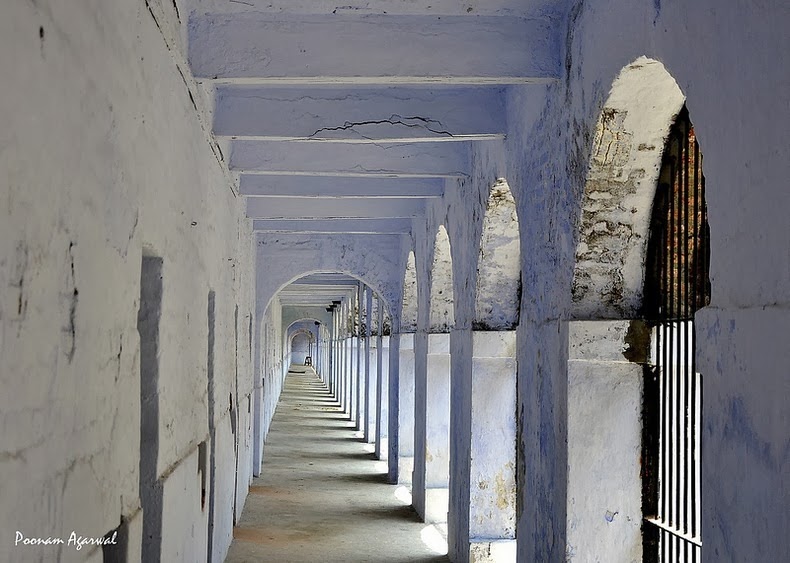The Cellular Jail, also known as Kala Pani or Black Water, was an infamous colonial prison situated in the Andaman and Nicobar Islands in the Indian Ocean, where Indian political prisoners were kept in exile. The jail stands a symbol of colonial oppression, cruelty and untold suffering. Hundreds of political prisoners were transported to the Andamans where they remained cut off from home in mainland India by over a thousand miles of sea. The sadistic jail superintendent David Barry would tell the freedom fighters, "The wall around the jail has been deliberately built low since, even if you escape, there is nowhere you can go to."
Photo credit: unknown
The Cellular Jail was devised by the British as a mean to break the spirit of the freedom fighters. In fact, the jail acquired the name ‘Cellular’ because it is entirely made up of individual cells for solitary confinement. The first prisoners were tied three-at-a-time to a wheel which operated a pestle for crushing oilseeds. The prisoners were required to crush thirty pounds of coconut and mustard oil each day. Being unable to meet the quota would result in severe punishment shackling and flogging. There are no records of how many died or were executed.
Although the prison complex itself was constructed between 1896 and 1906, the British had been using the Andaman islands as a prison since the days in the immediate aftermath of the 1857 War of Independence. Shortly after the rebellion was suppressed, the British executed many rebels. Those who survived were exiled for life to the Andamans to prevent them re-offending. The remote islands were considered to be a suitable place to punish the rebels. Not only were they isolated from the mainland, the overseas journey to the islands also threatened them with loss of caste, resulting in social exclusion.
By the late 19th century the independence movement had picked up momentum. As a result, the number of prisoners being sent to the Andamans grew and the need for a high-security prison was felt. Construction of the prison started in 1896 and was completed in 1906.
Originally the jail consisted of seven prolonged, puce-coloured wings with a central-tower acting as its fulcrum and a massive structure comprising honeycomb like corridors. Each wing is three storey high and radiated out of the central tower like the spokes of a wheel. Also, the spokes were so designed such that the face of a cell in a spoke saw the back of cells in another spoke. This way, communication between prisoners was impossible. There were no dormitories and a total of 693 cells.
The building was demolished after India gained independence and only three wings remain today. In 1969, the complex was declared a national memorial monument.





















And there are those who insist British colonialism was a force for good.
ReplyDeleteKaalapani (1996 Malayalam film) which was based on Indian freedom struggle was shot here.
ReplyDelete